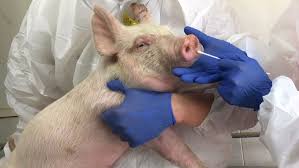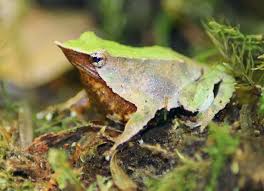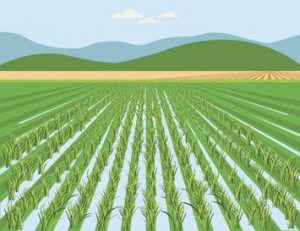Today’s Current Affairs: 1st August 2025 for UPSC IAS exams, State PSC exams, SSC CGL, State SSC, RRB, Railways, Banking Exam & IBPS, etc
Table of Contents
Doctrine of Merger:

The Supreme Court recently emphasized that the application of the Doctrine of Merger, in every case, should be accompanied by an awareness of its limitations and should not be wielded to close avenues for addressing genuine concerns.
- The Doctrine of Merger is a common law doctrine founded on the principle of maintenance of decorum and propriety in the functioning of Courts and Tribunals and preserving the sanctity of the justice delivery system.
- It provides that when an appellate court passes an order, the order passed by the lower court is merged with that order.
- The underlying logic being that there cannot be more than one decree or operative order governing the same subject-matter at a given point of time.
- The doctrine is not recognized statutorily but is a statement of judicial propriety and seeks to instill discipline in the functioning of subordinate adjudicating authorities, whether judicial, quasi-judicial or administrative.
- The applicability of the doctrine of merger entails the existence of a decision of a subordinate court/forum against which a right of appeal/revision before a superior forum/authority exists, which has been exercised and which has either modified, reversed or affirmed the decision of the subordinate authority.
- The consequence of such an act would be that the decision of the subordinate authority shall merge with that of the superior forum, which only shall sustain, be operative and capable of being enforced.
- The essence of the doctrine of merger is that it is only the decisions of the appellate, revisional or higher authority that subsist and the order under challenge ceases to have an independent existence.
- The doctrine solves the issue of which order must be enforced and given importance if there are multiple orders passed by both subordinate and superior courts on a single issue.
- It is not a doctrine of universal or unlimited application. It will depend on the nature of jurisdiction exercised by the superior forum and the content or subject-matter of the challenge.
Grant in Aid to National Cooperative Development Corporation (NCDC) Scheme:

The Union Cabinet, chaired by the Prime Minister, recently approved the Central Sector Scheme “Grant in Aid to National Cooperative Development Corporation (NCDC)”
- Grant in Aid to National Cooperative Development Corporation (NCDC) Scheme is a Central Sector Scheme with an outlay of ₹2, 000 crore for a period of four years from 2025-26 to 2028-29 (₹500 crore each year from FY 2025-26).
- The grant of ₹2,000 crore will be sourced through budgetary support from the Government of India.
- The approved grant will enable NCDC to raise ₹20,000 crore from the open market over the next four years.
- These funds will be utilised by NCDC for granting loans to Cooperatives for setting up new projects/expansion of plants, and loans for meeting the working capital requirements.
- Approximately 9 crore members of 13,288 Cooperative societies of various sectors like Dairy, Livestock, Fisheries, Sugar, Textile, Food Processing, Storage and Cold Storage; Labour and Women led cooperatives. across the country are likely to get benefitted.
- NCDC will be the executing agency for this scheme for the purpose of disbursement, follow-up, monitoring of implementation of the project, and recovery of loans disbursed out of the fund.
- NCDC will provide loans to cooperatives either through state government or directly, as per NCDC guidelines. Cooperatives that meet the criteria of direct funding guidelines of NCDC would be considered for financial assistance directly against admissible security or a state government guarantee.
- NCDC will provide loans to cooperatives, long-term credit for setting up/ modernization/ technology upgradation/ expansion of project facilities for various sectors, and working capital to run their businesses efficiently and profitably.
Outbreak of African Swine Fever:

An outbreak of African Swine Fever (ASF) has been recently confirmed at a pig farm in Ravas Brahmanan village, Patiala, prompting immediate action from district authorities.
- African Swine Fever (ASF) is a highly contagious and hemorrhagic viral disease affecting pigs and wild boar.
- It does not affect humans, nor does it affect other animal species.
- ASF causes a destructive effect on piggery due to high morbidity and mortality (up to 90-100 %).
- Originally found throughout sub-Saharan Africa, ASF is now prevalent in many countries in Europe, Asia, and Africa.
- In India it was first confirmed in Arunachal Pradesh and Assam in February-March 2020.
- It can be transmitted either via direct animal contact or via dissemination of contaminated food (e.g. sausages or uncooked meat).
- It can also be spread by soft ticks and through contaminated objects such as vehicles, clothes and equipment.
- The clinical symptoms can look very much like those of classical swine fever: fever, weak pigs, lack of appetite, inflamed eye mucous membranes, red skin, (bloody) diarrhea, and vomiting.
- Currently, there is no effective vaccine available against ASF, so prevention by adopting strict biosecurity measures, such as culling the animals, is the only way to prevent ASF.
Piprahwa Relics:

The Ministry of Culture, Government of India, proudly announced the historic return of the sacred Piprahwa relics of Lord Buddha to their rightful home in India.
- Piprahwa Relics are associated with the mortal remains of Lord Buddha.
- The Piprahwa Relics, which include bone fragments, soapstone and crystal caskets, a sandstone coffer, and offerings such as gold ornaments and gemstones. An inscription in Brahmi script on one of the caskets confirms these as relics of the Buddha, deposited by the Sakya clan.
- Discovered by: In 1898, William Claxton Peppé, an English estate manager and engineer, during an excavation found a stupa at Piprahwa, just south of Lumbini believed to be the birthplace of Lord Buddha.
- The British crown claimed Peppé’s find under the 1878 Indian Treasure Trove Act, and the bone and ash fragments were gifted by the British to King Chulalongkorn of Siam, now Thailand.
- The majorities of these relics were transferred to the Indian Museum, Kolkata, in 1899.
- These are classified as ‘AA’ antiquities under Indian law, prohibiting their removal or sale.
Supply and Use Table:

The Ministry of Statistics and Programme Implementation (MoSPI) has released the ‘Supply and Use Tables of 2020-21 and 2021-22’.
- It represents a detailed snapshot of all economic activities taking place in the economy.
- They are powerful analytical tools that present the structure of an economy as well as interlinkages among the various economic actors.
- They serve multiple purposes and have gained prominence due to their statistical robustness and analytical flexibility.
- They offer a comprehensive framework that integrates the three approaches to measuring Gross Domestic Product (GDP)—production, income, and expenditure within a unified structure.
- SUT is a very powerful tool for comparing and reconciling data from diverse sources, thereby improving the coherence and consistency between production and expenditure estimates.
- Supply and Use Tables (SUT) are presented as two interlinked matrices: the Supply Table and the Use Table, structured in a product-by-industry matrix.
- The Supply Table captures the total supply of goods and services, both from domestic production by industry and from imports.
- In contrast, the Use Table records the utilization of these products across various components—intermediate consumption by industries, final consumption, gross capital formation, and exports.
Darwin’s Frog : Endangered

Chile has launched a new effort to save the endangered Darwin’s frog
- Darwin’s frog (Rhinoderma darwinii ), also called the southern Darwin’s frog.
- It is unique among amphibians for its brooding habits.
- It is a tiny amphibian with leaf-like skin whose males carry tadpoles within pouches in their mouths.
- It is a diurnal creature, meaning it sleeps at night and is mostly active during daytime.
- When threatened by predators, the frog plays dead. It lays very still on the forest floor or floating in a stream.
- It measures 3 cm (1.18 inches), and was discovered in Chile’s southern Chiloe islands by Charles Darwin during his 1834 trip around the world.
- It is a rhinodermatid frog native to the forest streams of Chile and Argentina.Darwin’s frog (Rhinoderma darwinii ), also called the southern Darwin’s frog.
- Features of Darwin’s Frog
- It is unique among amphibians for its brooding habits.
- It is a tiny amphibian with leaf-like skin whose males carry tadpoles within pouches in their mouths.
- It is a diurnal creature, meaning it sleeps at night and is mostly active during daytime.
- When threatened by predators, the frog plays dead. It lays very still on the forest floor or floating in a stream.
- It measures 3 cm (1.18 inches), and was discovered in Chile’s southern Chiloe islands by Charles Darwin during his 1834 trip around the world.
- It is a rhinodermatid frog native to the forest streams of Chile and Argentina.
INS Himgiri:

INS Himgiri (Yard 3022) was delivered to the Indian Navy at GRSE, Kolkata.
- INS Himgiri is the third ship of Nilgiri Class (Project 17A) and the first of the class built at Garden Reach Shipbuilders & Engineers (GRSE).
- It is a reincarnation of the erstwhile INS Himgiri, a Leander-class frigate,that was decommissioned on 06 May 2005 after 30 years of glorious service to the nation.
- It is designed by the Warship Design Bureau (WDB) and overseen by the Warship Overseeing Team (Kolkata).
- Features of INS Himgiri
- P17A ships are fitted with an advanced weapon and sensor suite compared to the P17 (Shivalik) class.
- These ships are configured with Combined Diesel or Gas (CODOG) propulsion plants, comprising a diesel engine and gas turbine, that drives a Controllable Pitch Propeller (CPP) on each shaft, and a state-of-the-art Integrated Platform Management System (IPMS).
- The weapon suite comprises supersonic Surface-to-Surface missile system, Medium-Range Surface to Air Missile system, rapid-fire Close-in Weapon Systems.
- It has indigenous content of 75%, which has involved over 200 MSMEs at GRSE.
- P17A frigates reflect a generational leap in indigenous ship design, stealth, survivability, and combat capability.
NHAI Sustainability Report 2023-24:

The National Highways Authority of India (NHAI) released its second Sustainability Report for FY 2023–24, detailing significant achievements in integrating Environmental, Social, and Governance (ESG) principles into its operations.
- The report aligns with India’s Mission LiFE, and the principles of a circular economy.
- Despite a 20% increase in National Highway construction, NHAI successfully reduced its GHG emission intensity from 1.0 to 0.8 MTCO₂e/km, demonstrating a clear decoupling of construction growth from environmental harm.
- In FY 2023–24, NHAI utilized over 631 lakh metric tonnes of recycled and reused materials, including fly ash, plastic waste, and reclaimed asphalt, significantly reducing construction waste and enhancing resource efficiency.
- Under the Amrit Sarovar Mission, NHAI has developed 467 water bodies across the country.
- These efforts have also resulted in the recovery of 2.4 crore cubic meters of soil, leading to estimated cost savings of ₹16,690 crore in construction material.
- The report notes a 74% reduction in water use intensity in water-stressed regions, reflecting NHAI’s commitment to water conservation in infrastructure development.
- NHAI is a statutory body under the Ministry of Road Transport and Highways, responsible for the development, maintenance, and management of National Highways in India.
- It was established under the NHAI Act, 1988 and became operational in February 1995.
ICAR’s AI-Powered Agromet Advisory:

ICRISAT and ICAR have launched an AI-powered, context-specific Agromet Advisory Service for climate-resilient agriculture.
- ICAR’s AI-Powered Agromet Advisory is a real-time, personalised climate advisory system developed using Artificial Intelligence (AI) and Machine Learning (ML) to assist smallholder farmers in making informed agricultural decisions amid rising climate risks.
- Jointly launched by ICRISAT and ICAR, with support from the Government of India’s Monsoon Mission-III and partners like IMD, IITM, and CGIAR’s AI4CRA.
- Objective is to provide real-time, hyper-local, and personalised weather and climate advisories to smallholder farmers for adaptive decision-making.
- The project is being piloted in Maharashtra through ICAR’s Agro-Meteorological Field Units (AMFUs) before scaling nationwide and internationally.
US Sanctions 6 Indian Companies Over Iran Trade:

The US Department of State sanctioned 20 global firms, including 6 Indian companies, for engaging in petrochemical trade with Iran.
- The United States imposed sanctions under Executive Order 13846.
- Six Indian companies were identified among the 20 entities globally.
- Reason for Sanctions:
- These firms knowingly engaged in trade of Iranian petrochemical products.\
- The US accuses Iran of using oil revenue to fund terrorist groups, oppress its citizens, and destabilize the Middle East.
- The US policy aims to cut off economic flows to the Iranian regime.
Lifted the 28-year-old ban on heritage sports like bullock cart races, dog races, horse races, and pigeon racing:
The Punjab government has lifted the long-standing ban on traditional heritage sports, including bullock cart races, dog races, horse races, and pigeon racing, marking a revival of the state’s cultural identity. Chief Minister Bhagwant Mann, while addressing a gathering in Ludhiana, said the decision fulfills the government’s promise to the people of Punjab to bring back their much-loved rural traditions.The ban on these sports had been in place since 1997, with concerns over alleged animal cruelty. However, the new legislation introduced by the state government ensures that these events will now be held across Punjab without cruelty to animals.
Double Olympic Champion Laura Dahlmeier Dies in Mountaineering Accident in Pakistan:
The sporting world is in mourning after the tragic death of Laura Dahlmeier, the German double Olympic champion and seven-time world champion in biathlon, who passed away at the age of 31 following a mountaineering accident in Pakistan’s Karakoram range. Known both for her historic achievements on the biathlon track and her passion for mountaineering, Dahlmeier’s untimely death has left fans and fellow athletes devastated.Dahlmeier was attempting to climb Laila Peak (6,069 metres) when she was caught in a rockfall at an altitude of around 5,700 metres.Due to the remote location, a helicopter could only reach the site the following morning on 29 July, but by then, the chances of survival were lost.
A recovery operation was launched but was later called off on the evening of the same day.
UN Women celebrated its 15th anniversary:
The United Nations (UN) entity dedicated to gender equality and the empowerment of women. It was created in July 2010 by the UN General Assembly.
The main roles of UN Women are:
- To support inter-governmental bodies, such as the Commission on the Status of Women, in their formulation of policies, global standards, and norms.
- To help member states implement these standards, standing ready to provide suitable technical and financial support to those countries that request it, and to forge effective partnerships with civil society.
- To lead and coordinate the UN system’s work on gender equality as well as promote accountability, including through regular monitoring of system-wide progress.




